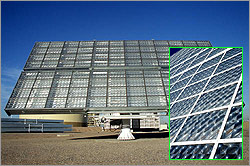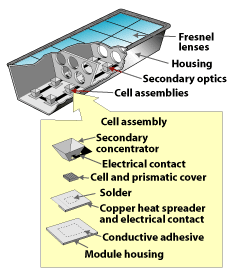To: steveo
Each panel puts out 250 watts of power at peak, with a DC/AC converter. Put 8 to 16 of these together and you will probably be selling power back to the utility during the day and buying it at night.
It could save money for homes that have a Time of Use meter, popular in some areas. TOU meters are mostly used in commercial metering.
Here is a meter for a large solar cell system in Austin TX. Click on the meter and you will see a 3 day graph of electrical output. Some days produce a lot of power, some days don't.
http://www.energyintegrators.net/page6.html
What is important to note is that you allow CitizenRe to rent you a solar cell system, provide the insurance for it, pay the local utility a fee for monthly use and will have to pay for power in excess of solar generation.
All in all, if their expenses are low enough they will be able to make a pretty penny on this; the consumer will have lower energy bills (if not nearly ZERO energy bills); and it really is using the free energy that the sun delivers every day.
28 posted on
01/21/2007 7:20:30 AM PST by
texas booster
(Join FreeRepublic's Folding@Home team (Team # 36120))
To: texas booster
We switched to time of use about a year and a half ago. The standard rate now is about $0.10/KWH. We pay around $0.21/KWH from 7 A.M. to 7 P.M. during the week, but pay $0.031/KWH evenings and weekends. With a timer on our electric water heater, this saves us around $38-$40 per month.
I'm waiting for a decent electric car to become available for me to use to commute to and from work, a round trip of about 40-45 miles, depending if I do any shopping on the way home. Charging at night, I could save big time.
43 posted on
01/21/2007 7:44:52 AM PST by
MRadtke
(NOT the baseball player)
To: texas booster
Try these..
http://www1.eere.energy.gov/solar/concentrator_systems.html


48 posted on
01/21/2007 7:55:50 AM PST by
xcamel
(Press to Test, Release to Detonate)
FreeRepublic.com is powered by software copyright 2000-2008 John Robinson



